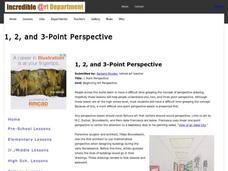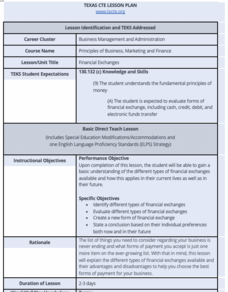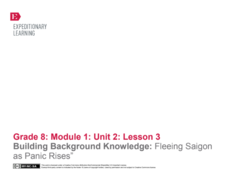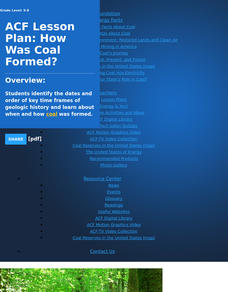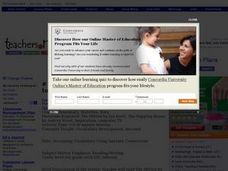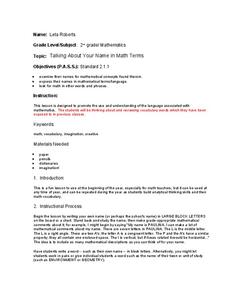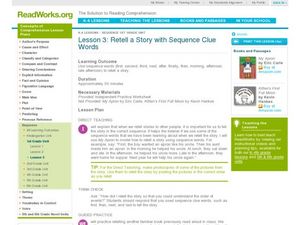Incredible Art
1, 2, and 3-Point Perspective
Introduce drawing young scholars to perspective with a series of lesson plan that detail how to draft images in one-, two-, and three-point perspective. Each exercise includes step-by-step, illustrated directions and examples.
Macmillan Education
Changing Your Mindset
Why do some people achieve their goals and persevere despite the setbacks they face? This question is the focus of this life skills lesson, which includes worksheets, discussion, and collaborative activities on developing a growth mindset.
Museum of Disability
Rolling Along
Kindness and empathy can be as important as reading comprehension skills, especially for younger learners. Reinforce both with a lesson based on Rolling Along: The Story of Taylor and His Wheelchair by Jamee Riggio Heelan. As...
Texas Education Agency (TEA)
Geometry in Architecture #1
Discover how to analyze architecture from a geometric standpoint. The fourth installment of an 11-part unit on architecture first provides a presentation on axis, balance, basic form, formal, pattern, proportion, symmetry, and tripartite...
Pennsylvania Department of Education
Volume and Surface Area
Build boxes using unit cubes to compare surface area and volume. The group performs multiple experiments to determine properties of volume, such as if it makes a difference which order the dimensions are multiplied in. Extensive...
ESL Kid Stuff
Parts of the Body
Eyes and ears and mouth and nose! Practice the names of body parts with a instructional activity based on the song "Head, Shoulders, Knees and Toes". Kids sing the song and read a story with the same vocabulary words before...
Teach Engineering
Tissue Mechanics
Engage your class by showing them how silly putty and human tissues are alike. Pupils learn more about tissue mechanics by reflecting upon their experiences with silly putty. The lesson covers collagen, elastin, and...
EngageNY
Estimating Probabilities by Collecting Data
Take a spin to determine experimental probability. Small groups spin a spinner and keep track of the sums of the spins and calculate the resulting probabilities. Pupils use simulated frequencies to practice finding other probabilities to...
Healthy Native Youth
Chapter 2: Learning About Adolescence
The Native American symbol, The Circle of Life, represents life's spiritual, physical, mental, and emotional well being. By way of deep discussion, and two games, the lesson uses the Circle of Life to explore the stages of...
Texas Education Agency (TEA)
Financial Exchanges
It's time to cash in some chips and learn about financial literacy. Using the informative resource, scholars identify and evaluate different types of financial exchanges. Pupils then develop a new form of financial exchange and create a...
Prestwick House
Poe’s “The Raven” – Unity of Effect
How do Poe's choices of imagery, rhythm and rhyme scheme, and structure help build the desired single effect of "The Raven"? After listening to a dramatic reading of the poem, class members consider whether Poe's choices do...
EngageNY
Building Background Knowledge: "Fleeing Saigon as Panic Rises”
How can scholars better understand the refugee experience? Pupils read Fox Butterfield's article "Panic Rises in Saigon, but the Exits are Few" and connect it to the novel Inside Out & Back Again. They annotate the text, looking for...
EngageNY
Building Background Knowledge: Small-Group Work to Learn More about the History of Wars in Vietnam
Scholars take a close look at "The Vietnam Wars." They answer questions and discuss in groups to conclude that the author respects the Vietnamese. They participate in a modified jigsaw discussion and end the exercise with a quick writing...
Cornell University
Buoyancy
Swimmers know to float by turning their bodies horizontally rather than vertically, but why does that make a difference? In an interesting lesson, scholars explore buoyancy and the properties of air and water. They test cups to see which...
New York State Education Department
TASC Transition Curriculum: Workshop 11
You'll C-E-R a difference in classroom achievement after using a helpful lesson. Designed for economics, civics, government, and US history classes, participants practice using the CER model to craft arguments about primary and secondary...
Pimsleur
Book Report: Children Return to Their Roots
Based on the book Victoria Goes to Brazil (Children Return to their Roots) by Maria de Fatima Campos, this lesson will teach learners about family, geography, sports, music, and transportation. Learners read, summarize, and use the book...
Curated OER
How Was Coal Formed?
Geology can be a lot of fun. Learners review geology related vocabulary, make flashcards, use encyclopedias to answer questions, then explore the formation of coal. They identify dates and order them into key time frames of geologic...
Curated OER
Increasing Vocabulary Using Internet Connections
Young scholars retell the story, "The Mitten," by Jan Brett, as a group by using the computer program,
Curated OER
Introduce Vocabulary: Clifford’s Family
Students discover 3 tier two vocabulary words. In this vocabulary lesson, students read the story Cilfford's Family, focusing on pre-select tier two vocabulary words. The words are defined by the teacher and students practice recognizing...
Curated OER
ESL First Certificate/Advanced Vocabulary Formation Worksheet 19
In this ESL advanced vocabulary formation worksheet, students fill in the blanks in each sentence using the correct form of the words that are given in bold beneath each sentence.
Curated OER
Visual Vocabulary
Students use context clues to determine an understanding for vocabulary words in texts. In this vocabulary lesson plan, students recognize linguistic features in their readings to help them to figure out words.
Curated OER
Talking about your name in math terms
Students talk about mathematical language. In this talking about your name lesson, students use the letters in their own name to review math vocabulary and concepts.
Curated OER
Flying the Friendly Skies
Young scholars discover the power of wind by flying a glider. In this weather lesson, students describe their thoughts on wind and practice using weather related vocabulary. Young scholars construct model gliders in class and...
Curated OER
Lesson 3: Retell a Story with Sequence Clue Words
First graders evaluate sequence words. In this order of events lesson, 1st graders practice using sequence words to retell a story. They do guided practice with the teacher retelling a story they have read as a class and then try it...
